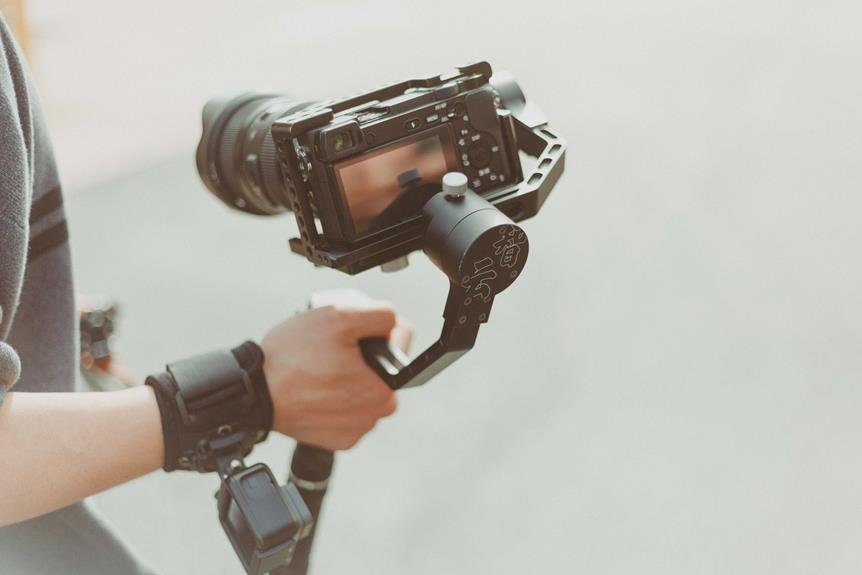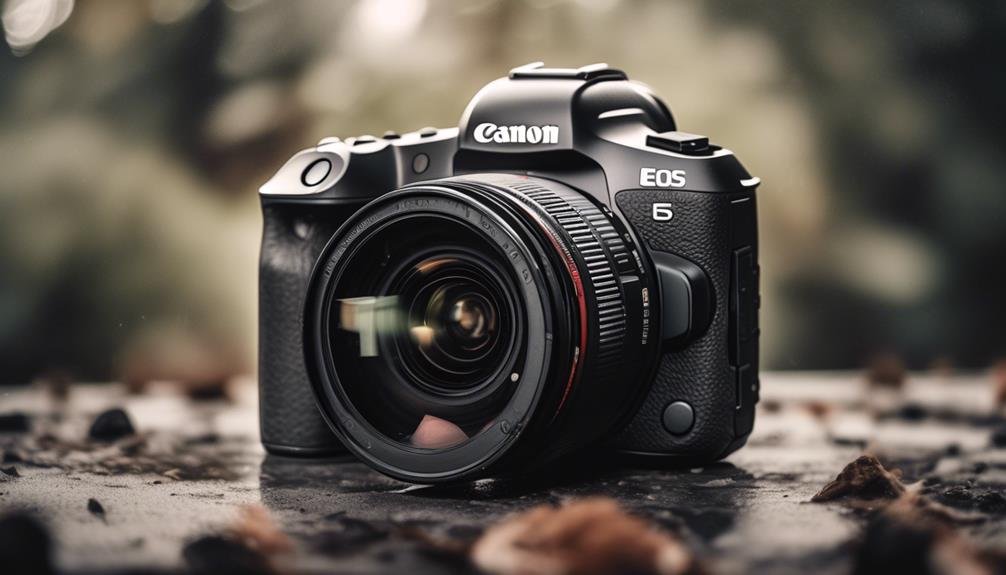
So, you've finally had it with shaky footage ruining your masterpieces, huh? Well, fear not, my fellow videographers, because the world of mirrorless cameras has some impressive in-body video stabilization technology to offer. But which ones are the cream of the crop? Join us as we explore the top contenders in the mirrorless camera market that boast exceptional in-body video stabilization, ensuring silky-smooth footage that will elevate your videography game to new heights.
Sony Alpha A7s III
The Sony Alpha A7s III offers exceptional in-body video stabilization, setting a new standard for handheld shooting quality in mirrorless cameras. Its advanced stabilization technology allows for remarkably steady footage even in challenging shooting conditions. This is particularly advantageous for content creators and filmmakers who rely on smooth, professional-looking video content. Additionally, the A7s III excels in low light performance, delivering impressive clarity and detail in dimly lit environments. This makes it an ideal choice for capturing stunning visuals in various lighting conditions, expanding creative possibilities for users. Furthermore, the inclusion of dual card slots provides enhanced flexibility and security for storing valuable footage. This feature allows for simultaneous recording to two separate cards, ensuring that important content is backed up in real-time, a crucial aspect for professional workflows. With its innovative stabilization capabilities, remarkable low light performance, and the added security of dual card slots, the Sony Alpha A7s III stands out as a top choice for creators seeking cutting-edge technology in mirrorless cameras.
Panasonic Lumix GH5
Having discussed the exceptional in-body video stabilization of the Sony Alpha A7s III, let's now turn our attention to the Panasonic Lumix GH5, a mirrorless camera renowned for its versatile video capabilities and professional-grade performance.
- Video Quality: The Panasonic Lumix GH5 is capable of capturing stunning 4K video at up to 60fps, providing exceptional detail and clarity for professional videography.
- Low Light Performance: With its high-sensitivity sensor and advanced image processing, the GH5 excels in low light conditions, delivering impressive video quality even in challenging lighting situations.
- 5-Axis In-Body Stabilization: The GH5 features advanced 5-axis in-body stabilization, minimizing camera shake and ensuring smooth, steady footage without the need for additional stabilizing equipment.
- Professional Video Features: This camera offers a range of professional video features, including 10-bit internal recording, V-LogL recording capability, and unlimited recording time, making it ideal for professional video production.
- Versatile Shooting Capabilities: From high-speed 180fps slow-motion recording to advanced focus and exposure control, the GH5 provides videographers with a versatile tool for capturing a wide range of creative content.
The Panasonic Lumix GH5 stands out for its exceptional video quality, low light performance, and professional-grade features, making it a top choice for videographers seeking innovation and versatility.
Fujifilm X-T4

Renowned for its exceptional video capabilities and advanced features, the Fujifilm X-T4 is a mirrorless camera that continues to impress professional videographers and content creators alike. One standout feature of the X-T4 is its film simulation, which replicates the look of traditional Fujifilm films, providing a unique and artistic touch to videos straight out of the camera. This is especially appealing to filmmakers and videographers who value the aesthetic of their footage. Additionally, the X-T4 boasts impressive autofocus performance, thanks to its advanced hybrid AF system that covers nearly the entire frame, ensuring sharp focus on subjects even in challenging shooting conditions. This capability is crucial for capturing smooth and professional-looking videos without the distraction of focus hunting. The combination of film simulation and top-notch autofocus performance makes the Fujifilm X-T4 a compelling choice for videographers who seek innovation and reliability in their filmmaking tools.
Nikon Z6 II
Incorporating advanced in-body video stabilization, the Nikon Z6 II mirrorless camera offers unparalleled stability for capturing smooth and steady footage in various shooting scenarios. The in body stabilization technology of the Z6 II enhances the video shooting experience, making it an impressive choice for videographers and filmmakers. Here's why the Nikon Z6 II stands out in terms of video features:
- Superior Image Quality: The camera's 4K UHD recording capabilities and full-frame sensor deliver stunningly detailed and sharp footage.
- Dual Pixel Autofocus: The Z6 II's advanced autofocus system ensures precise and smooth focusing during video capture, even in challenging conditions.
- Slow-motion Capabilities: With support for high-speed recording, the Z6 II allows for impressive slow-motion footage, adding a creative dimension to videography.
- Time-lapse Functionality: The camera's built-in time-lapse feature enables users to easily create captivating time-lapse videos without the need for additional equipment.
- Versatile Connectivity: The Z6 II offers seamless integration with external recording devices and supports live streaming, expanding its capabilities for a range of video production needs.
The Nikon Z6 II's video features and in body stabilization technology make it a compelling option for professionals and enthusiasts seeking top-notch video performance in a mirrorless camera.
Canon EOS R5

The Canon EOS R5 impresses with its cutting-edge in-body video stabilization, setting a new standard for capturing smooth and steady footage in diverse shooting environments. This camera is a game-changer for videographers, offering 8K video recording capability with superb video quality. The in-body stabilization system of the Canon EOS R5 ensures that even handheld footage is incredibly smooth, reducing the need for additional stabilizing equipment. This is particularly valuable for creators who need to move freely while shooting, without compromising on video quality. Moreover, the Canon EOS R5 excels in low light performance, delivering stunning video even in challenging lighting conditions. Its advanced sensor and image processing technology allow for remarkable clarity and detail, even when shooting in dimly lit settings. Overall, the Canon EOS R5's in-body video stabilization, exceptional video quality, and impressive low light performance make it a top choice for content creators and videographers who demand innovation and uncompromising performance in their filmmaking endeavors.
Frequently Asked Questions
Are There Any Additional Accessories or Lenses That Can Further Enhance the In-Body Video Stabilization of These Mirrorless Cameras?
Absolutely! Enhancing stabilization with lenses is a game-changer. Also, external stabilizing accessories can take it to the next level. These tools provide unparalleled smoothness, making every shot a masterpiece.
Can the In-Body Video Stabilization Be Used in Conjunction With Electronic Image Stabilization or Other Stabilization Features?
Yes, in-body video stabilization can be used with electronic image stabilization and other stabilization features. We compared the stabilization features to understand the trade-offs and video recording limitations, and found ways to further enhance the stabilization.
How Does the In-Body Video Stabilization of These Cameras Compare to Traditional Gimbal Stabilization Systems?
In comparing in-body video stabilization to traditional gimbal systems, we find it offers impressive effectiveness and versatility for handheld shooting. However, it may have limitations with extreme movements or long-duration filming, where gimbals excel.
Is the In-Body Video Stabilization Effective for All Types of Video Recording, Including Fast Movement or Low Light Conditions?
In-body video stabilization is effective for various video recording scenarios, including fast movement and low light conditions. However, it may have limitations and trade-offs, such as not being as effective as traditional gimbal stabilization for certain types of footage.
Are There Any Limitations or Trade-Offs to Consider When Using the In-Body Video Stabilization Feature of These Mirrorless Cameras?
When using in-body video stabilization, we've found some limitations in terms of image quality and trade-offs with battery life. However, the feature still offers significant advantages for capturing smooth, professional-looking footage in various conditions.
